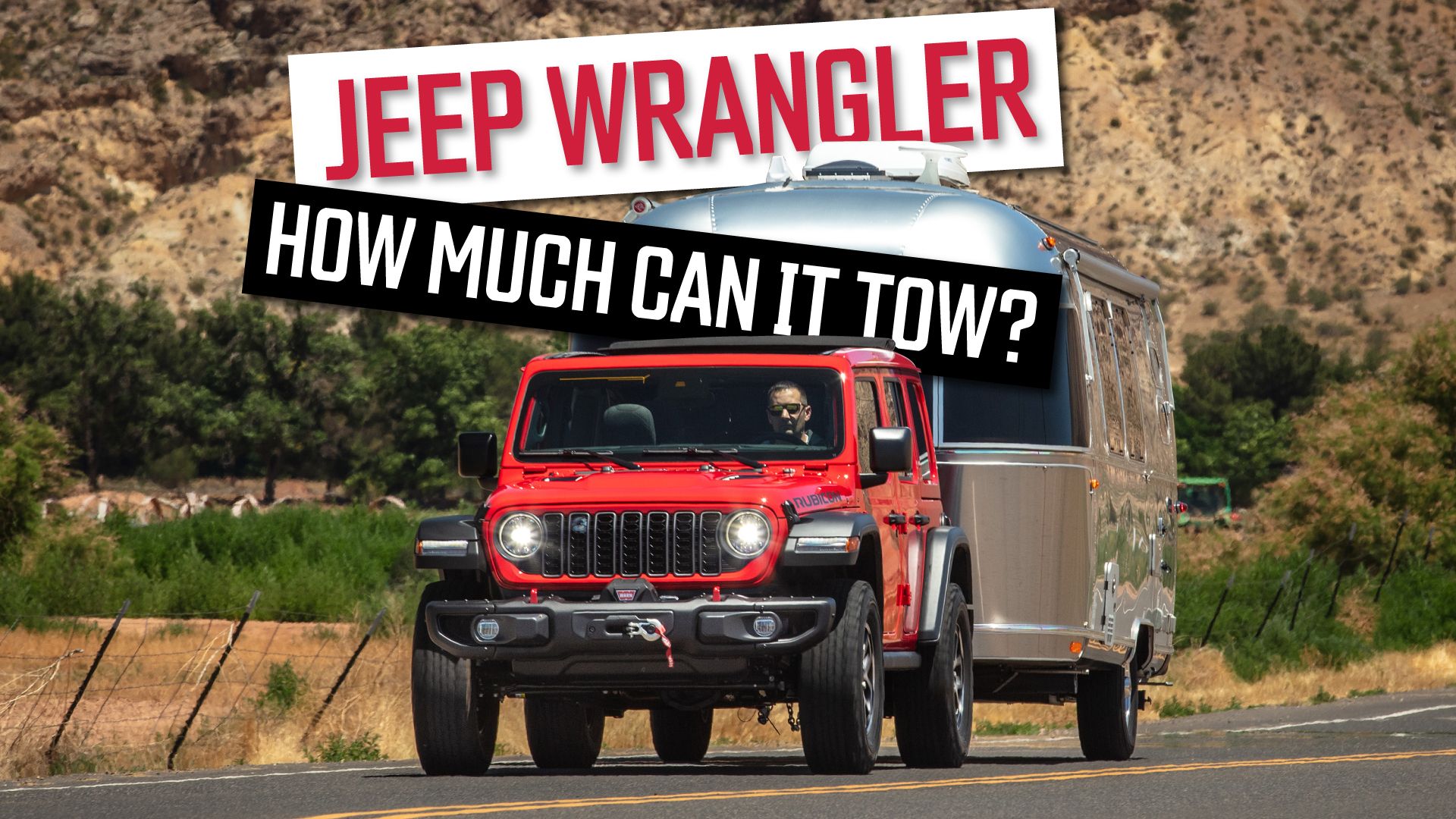Owning a Jeep Wrangler is a rite of passage for many adventure enthusiasts. The sleek design, reminiscent of rugged terrain and off-road escapades, makes it an icon. But here’s a playful ponder: have you ever considered just how much your trusty Wrangler can tow? It’s a fascinating topic that could pose a challenge, particularly for those ready to embark on a new journey—whether it be towing a camper through the countryside or hauling a boat to the lake. Let’s dive into the specifics of towing capabilities and safety considerations.
The capability to tow is comprehensive, often determined by a variety of factors including the model year, trim level, and specific package options. Generally speaking, the towing capacity of a Jeep Wrangler fluctuates between 2,000 to 3,500 pounds, depending on the configuration. Older models might have lower capacities, while newer versions have made significant strides in capability, thanks to advancements in engine technology and chassis design.
First, let’s explore what affects towing capacity. Primarily, it hinges on the engine under the hood. The Jeep Wrangler typically offers robust powertrains designed to provide the necessary torque required for towing. For instance, the latest models boast a 3.6-liter V6 engine or an optional 2.0-liter turbocharged four-cylinder engine, both of which deliver impressive performance figures. With the V6, you could expect around 285 horsepower, a sweet connection between power and performance, making those heavy loads feel significantly lighter.
Then there’s the choice between manual and automatic transmissions—each affecting how torque gets applied on tough terrains. Such distinctions can influence efficiency, responsiveness, and ultimately how comfortably you can manage the load behind you. Notably, the Rubicon trim of the Wrangler often comes equipped with enhanced features like heavy-duty axles, which augment its towing prowess and off-road capability.
In addition to the engine and transmission, the Wrangler’s gear ratio plays a crucial role. Generally, a lower gear ratio can offer better torque multiplication, which is essential when hauling a trailer or towing a recreational vehicle up an incline. However, this might come at the cost of fuel efficiency, an important factor for the eco-conscious adventurer.
When venturing into towing territory, you must consider the types of trailers permissible. The Jeep Wrangler can competently tow a variety of trailers: from small campers to lightweight utility trailers. However, it’s wise to consult the owner’s manual for specifics regarding your model year. Maximum trailer weight, tongue weight (which typically ranges from 10% to 15% of the total trailer weight), and axle load ratings are all critical factors to bear in mind.
Another imperative aspect to consider is the towing setup. A proper tow package, including a reliable hitch and safety chains, is vital for both functionality and safety. Jeep offers tow packages that come with the necessary hardware for secure towing, fitted specifically to maximize the Wrangler’s capabilities.
Now, let us explore the practical implications of towing with a Jeep Wrangler. Picture this: you’ve decided to take the family on an epic camping trip with a sizable trailer in tow. The excitement is palpable, but there’s a challenge lurking on the horizon—what happens when you hit those steep inclines? Can your Jeep maintain control, stability, and braking efficiency? These are essential queries to think about before you embark on your journey.
Stability can be one of the most pressing concerns when towing. While the Wrangler is engineered for off-road adventures, understanding how it behaves while towing is key. It’s not just about the sheer force enabling you to pull; it’s also about maintaining balance. The weight distribution across axles will affect your handling, especially during sharp turns or sudden stops. Double-checking that your cargo is evenly distributed will significantly enhance both safety and comfort during your travel.
Additionally, payload capacity cannot be overlooked. The combined weight of your passengers, gear, and trailer plays a critical role in the Wrangler’s performance. It’s essential not to exceed the gross vehicle weight rating (GVWR), typically around 5,000 pounds, as doing so can result in detrimental performance and safety hazards. It’s not just your Jeep at stake; it’s the well-being of your family and fellow drivers on the road.
Furthermore, consider the importance of braking systems when you’re pulling more than the vehicle’s standard load. Upgrading to a trailer that features its own braking system can make a noticeable difference, particularly on downhill slopes. Such upgrades are worth the investment for the peace of mind they’ll afford you when navigating steep terrain or heavy traffic.
In conclusion, the Jeep Wrangler is indeed capable of towing, but it comes with responsibilities and challenges that require careful consideration. From understanding towing capacities to maintaining proper safety protocols, your Jeep can transform into a versatile towing machine, accompanying you on thrilling escapades. So, whether you’re planning a weekend camping trip or a long road adventure, ensure your Wrangler is equipped and ready—it’s not just about how much you can tow, but how safely and effectively you can do it.
